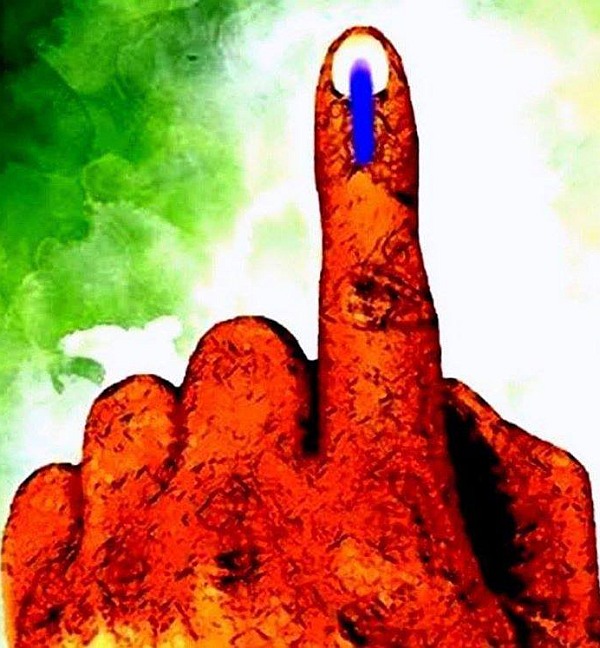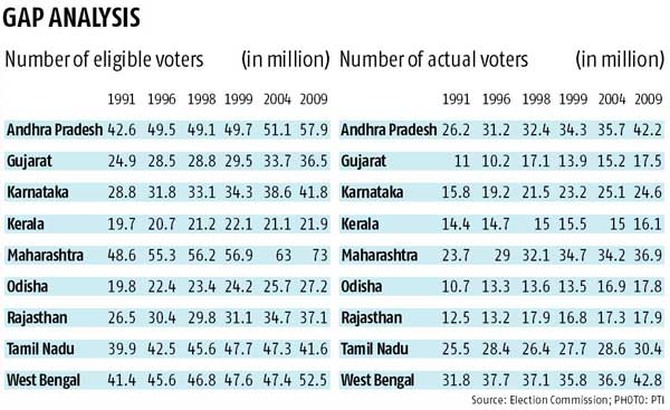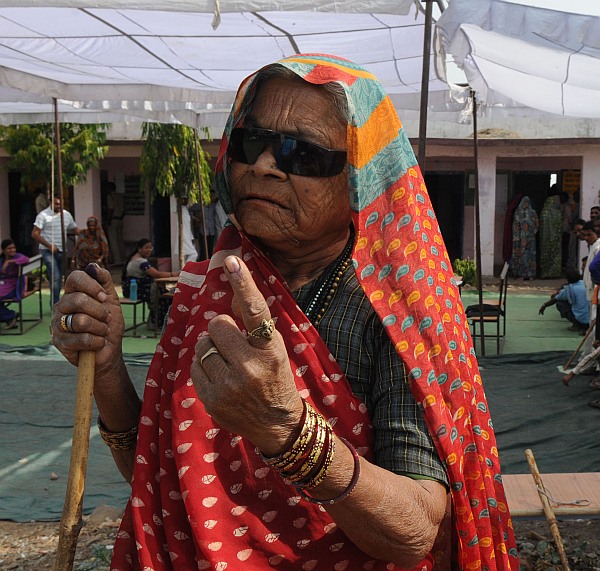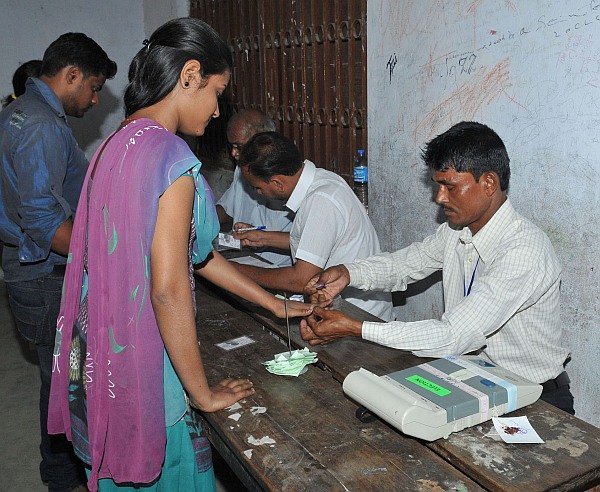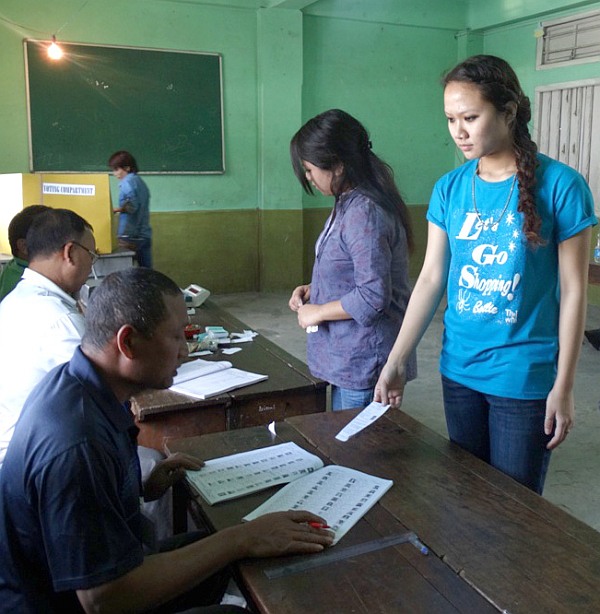 | « Back to article | Print this article |
The mysteries of 'dead' and 'deleted' voters
The election day debacle in Mumbai shows that the Election Commission's voter list data have long been suspect. Aadhaar would be a great solution for second-level authentication. Praveen Chakravarty explains
"If you find your name in the dead or deleted voter list, carry your photo identity, sign an affidavit stating that you are alive and residing in that area and cast your vote"
In a land that believes in births and re-births this was an ironic message sent to voters in Mumbai through various social media channels on voting day.
This was a consequence of nearly 300,000 voters being deleted from the voter lists, as a result of a "clean up" operation by the Election Commission.
The outrage over this deletion of certain prominent citizens in Mumbai from the electoral lists, amplified by media outbursts, has rightly raised the ante, amid calls for re-polling.
However, the Election Commission's voter list data has long been suspect.
Please click NEXT to read further...
The mysteries of 'dead' and 'deleted' voters
According to Election Commission data, 150,000 voters were added to the voter list in Mumbai for the 1999 Lok Sabha elections vis-a-vis the 1998 election.
But 27,000 voters were deleted for the subsequent 2004 election and, miraculously, 450,000 voters were added back for the 2009 election.
Mumbai was apparently an attractive city to live in from 2004 to 2009 but a terrible city from 1999 to 2004.
Similarly, something in Tamil Nadu made it uninhabitable and drove 5.6 million voters out between 2004 and 2009.
And it seems most of them went to Bengal since five million voters were added to the voter list in Bengal for the 2009 election.
However, 200,000 Bengalis and 500,000 Tamilians were removed from the 2004 voter list while Maharashtra was the most-favoured state with 6.1 million new voters for the 2004 election and 10 million new voters for the 2009 election.
Bizarre and facetious as the above may sound, this is based on data that the Election Commission releases before and after every election.
Click on NEXT to read further...
The mysteries of 'dead' and 'deleted' voters
Electoral voter lists that add new voters and remove dead or relocated voters largely follow net population growth trends, in the absence of external shocks.
Election Commission data give the impression that Indians procreate heavily in one five-year time period and die heavily in a subsequent five-year period, with spurts of massive internal migration between states -- which we all know is not what we experience in reality.
This column by no means belittles the mammoth task of organising and conducting the world's largest democratic exercise and salutes the Election Commission for its independence and efficiency over six decades. However, the underlying data of registered voters, actual voters and voter turnout percentages require serious introspection.
As the tables show, it is not merely voter lists that are dubious but also data on actual number of voters.
In the 1996 Lok Sabha election in Gujarat, about 10 million voters cast their votes, according to data from the Commission. In the 1998 election, nearly 17 million Gujaratis cast their vote (a 66 per cent increase) and in the 1999 election, only 14 million voters cast their vote (a 19 per cent decline).
Although voter turnouts may differ for various extraneous factors, such wild swings are inexplicable.
Click on NEXT to read further...
The mysteries of 'dead' and 'deleted' voters
Similarly, in Odisha, roughly 13 million people voted in the 1996, 1998 and 1999 Lok Sabha elections but suddenly in the 2004 Lok Sabha elections, 17 million people cast their votes (a 26 per cent increase).
No amount of voter awareness, migration, election sentiment and so on can explain this volatility in the number of actual voters in a particular state.
Variations in states such as Uttar Pradesh, Madhya Pradesh, and Bihar between 1999 and 2004 are understandable owing to the division of these states into smaller states but not states like Maharashtra, Tamil Nadu, Gujarat or West Bengal that have had steady trends in population growth over decades.
And redrawing of constituencies due to de-limitation exercise may change voter sizes within a constituency, but does not affect total voters within the state.
Voter turnout percentages released by the Commission exacerbates this confusion. Voter turnout percentage is a ratio with the number of actual voters as the numerator and the total number of eligible voters as the denominator.
Given that both the numerator and denominator numbers are suspect, percentages calculated on these suspect numbers are indisputably meaningless.
Click on NEXT to read further...
The mysteries of 'dead' and 'deleted' voters
We now know that by merely reducing the total number of eligible voters for Mumbai by more than 300,000 voters, even if the same total number of voters that voted in 2009 did this time, the voter turnout percentage would have been roughly two percentage points higher.
So, voter percentage numbers such as this "record-breaking 54 per cent" for Mumbai that are bandied about, and which then form the basis for prime-time television hyperbole about Mumbaikars' purported apathy, is a sheer waste of energy.
The root of this problem lies in how the Election Commission ensures voters are added just once to the list and how a voter that is deleted is not misused for a fake vote.
This is the classic problem of ghosts and duplicates that pervade most large databases in the country -- ration cards, PAN numbers, election cards and so on.
And today, this problem can be solved with a solution that is readily available -- Aadhaar.
Click on NEXT to read further...
The mysteries of 'dead' and 'deleted' voters
Six hundred million Indian residents today possess an Aadhaar number that is guaranteed to be unique, thanks to its biometric identification.
When the Election Commission performs its function of checking for eligibility of a new voter and decides to add the person to the voter list, that person's Aadhaar number can serve as a second-factor authentication of uniqueness.
While apprehensions over Aadhaar being available to non-citizens is valid, it's ability to act as a second-factor check to remove duplicates and ghosts within the Election Commission database cannot be argued against.
Veteran politician Sharad Pawar may have exhorted his supporters in jest to vote multiple times in multiple places during the multiple phases of the election. That it is indeed a possibility to do so in the absence of rigorous authentication for uniqueness of voters is a reality.
The silent problem of erroneous voter data has now been belled. And this time, there is a ready solution. The foundation for the world's largest democracy was laid by the mathematician Sukumar Sen, the first Chief Election Commissioner of free India.
Will the Election Commission now live up to its own lofty standards and lay the "aadhaar" (foundation) for clean and error -- free voter lists, so every citizen of the country can exercise her democratic right and not be denied?
The writer is a former member of the Unique Identity Authority of India and is Founding Trustee, IndiaSpend - India's first non-profit data journalism initiative.
